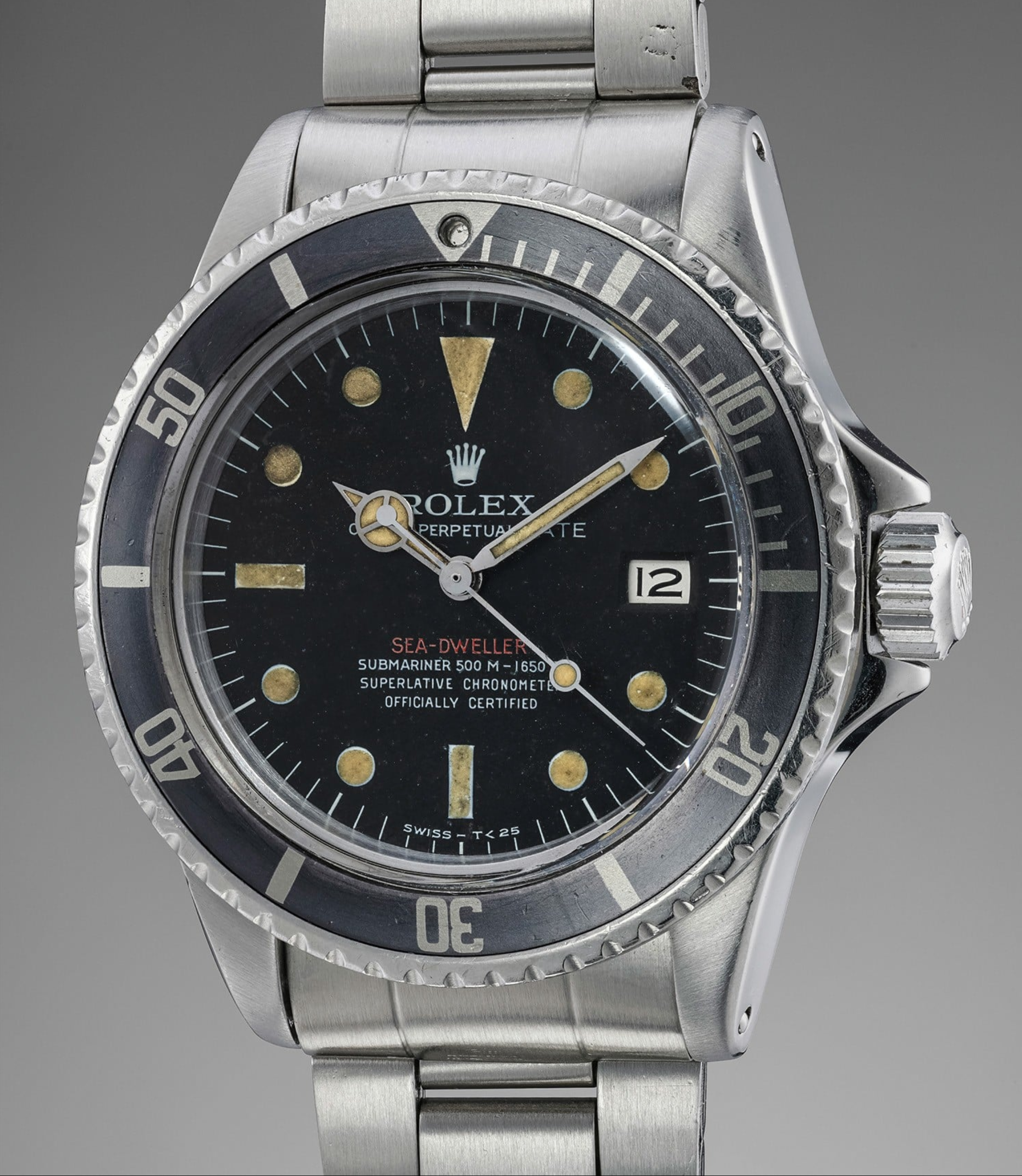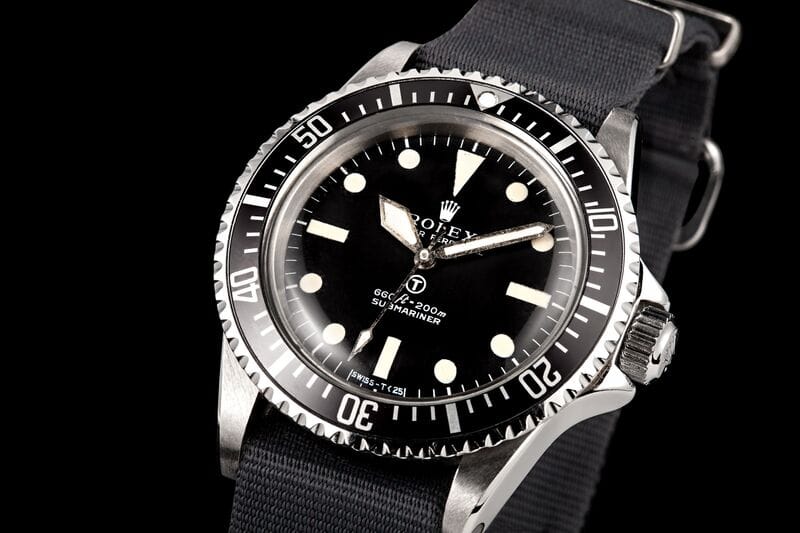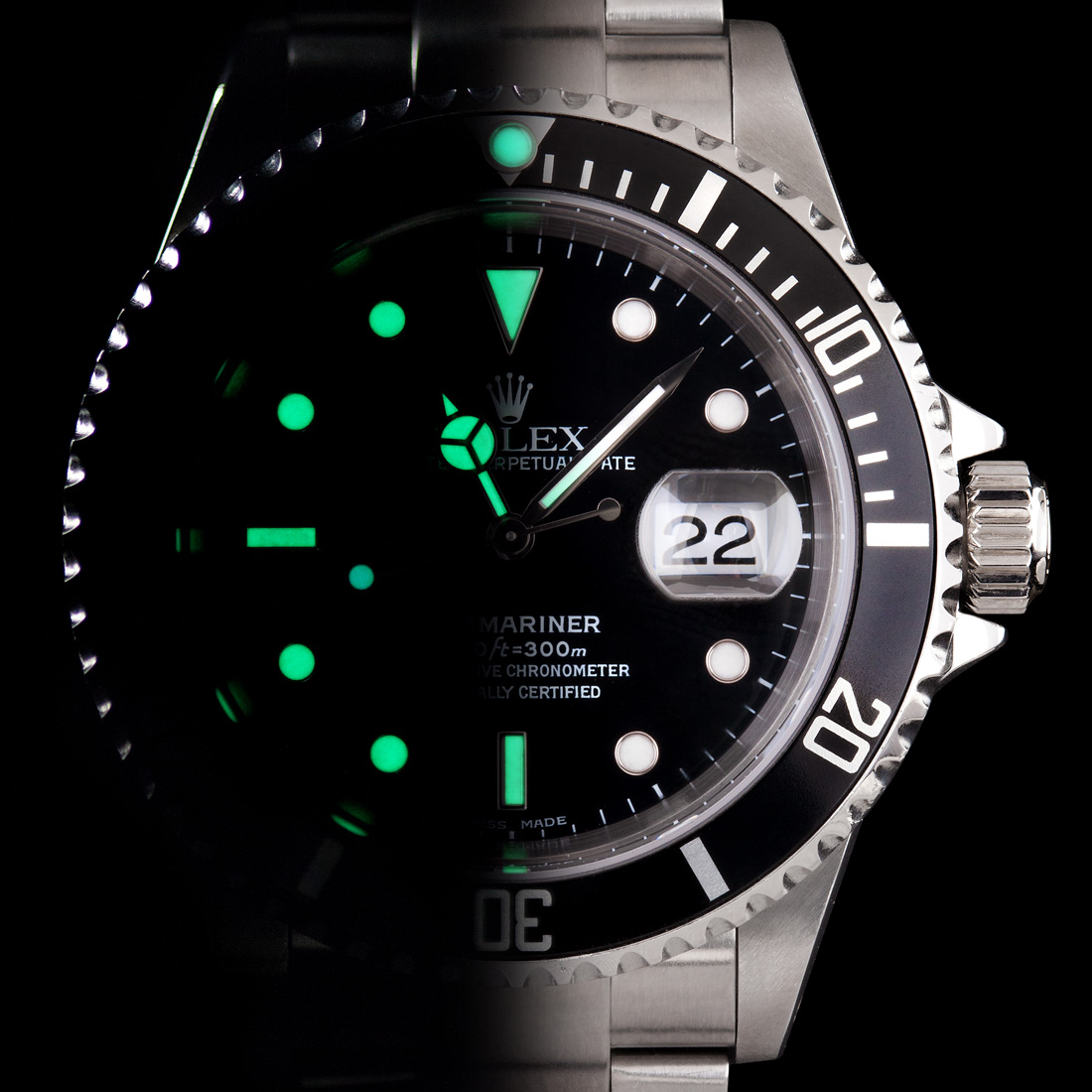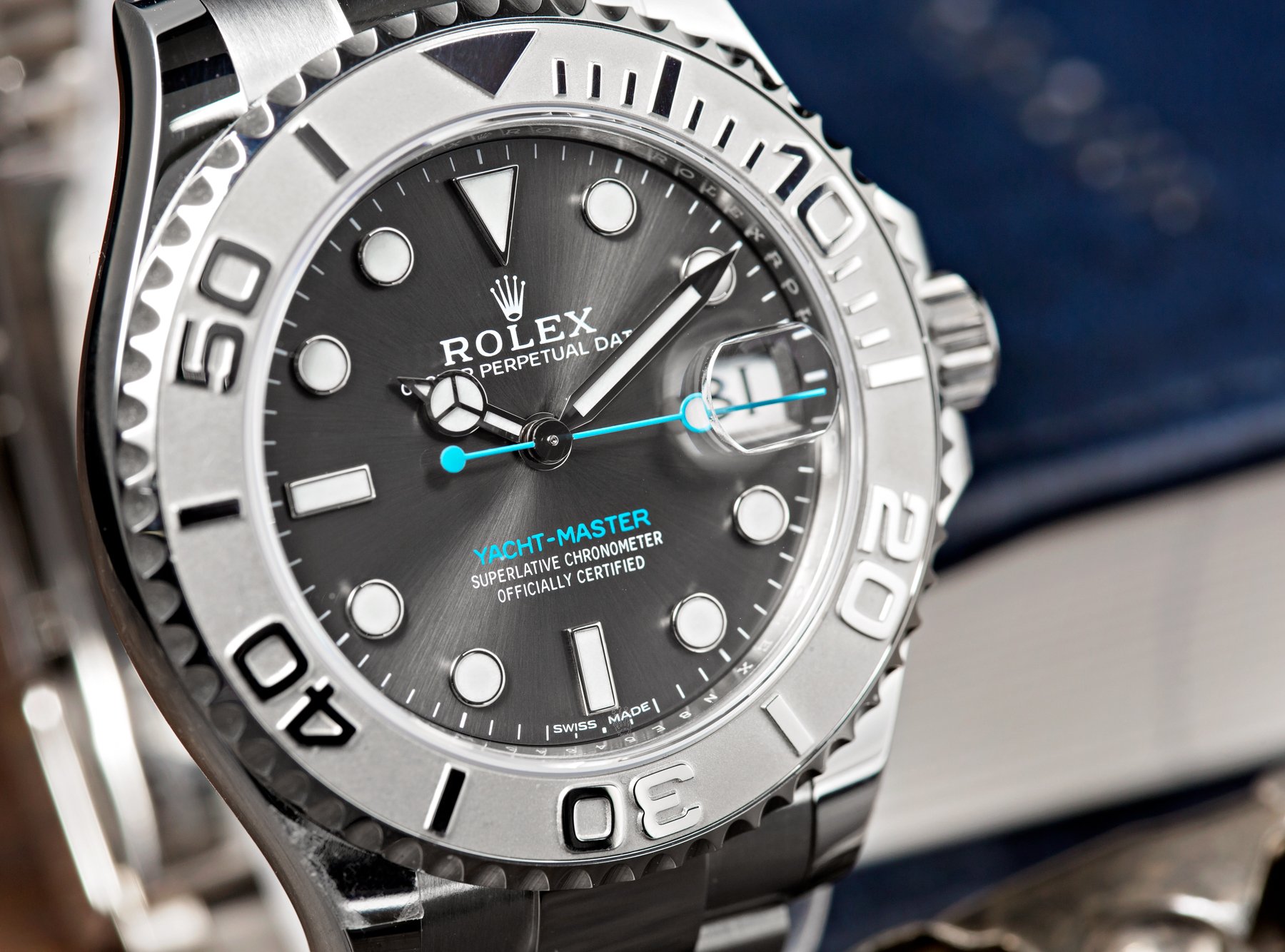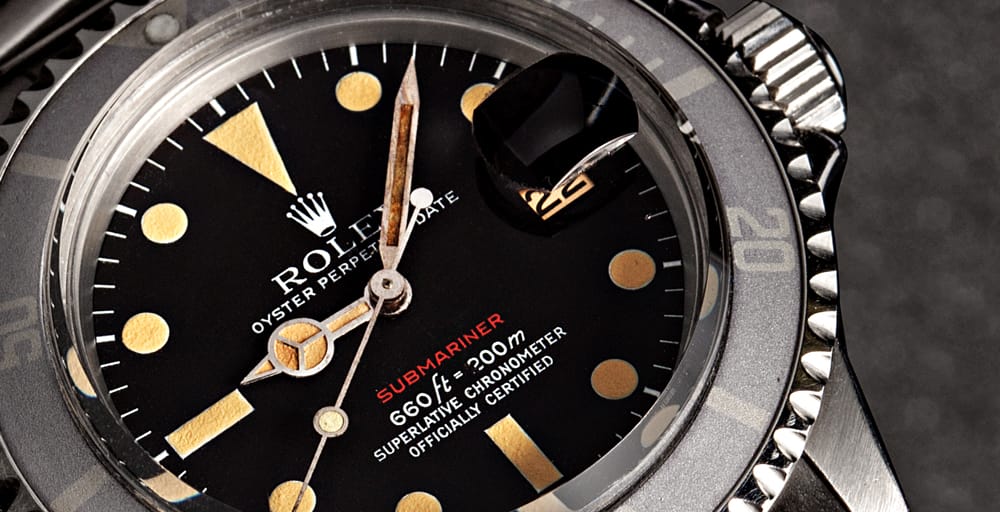The 43mm Rolex Sea-Dweller reference 126600 that was released at Baselworld 2017 brought a lot of attention back to the various vintage Rolex dive watches that have red text on their dials – all of which are now highly sought-after by collectors. Among these, it is the Rolex Single Red Sea-Dweller that is – by a significant margin – the rarest and most valuable. However, with all of the talk about the different “red text” Rolex dive watches, the extent of just how rare the Single Red Sea-Dweller is (and the details behind what makes this watch so special) can sometimes get overlooked or buried within the rest of the seemingly insignificant, but ever-so-important, vintage Rolex minutiae.
As a quick reminder – or for those entirely unfamiliar with this holy grail of vintage Rolex collecting, here is a brief overview of what exactly makes the Rolex Single Red Sea-Dweller so special, and why collectors are willing to pay crazy prices for them whenever they manage to surface at auction.
Click here for Our Ultimate Buying Guide on the Rolex Sea-Dweller.
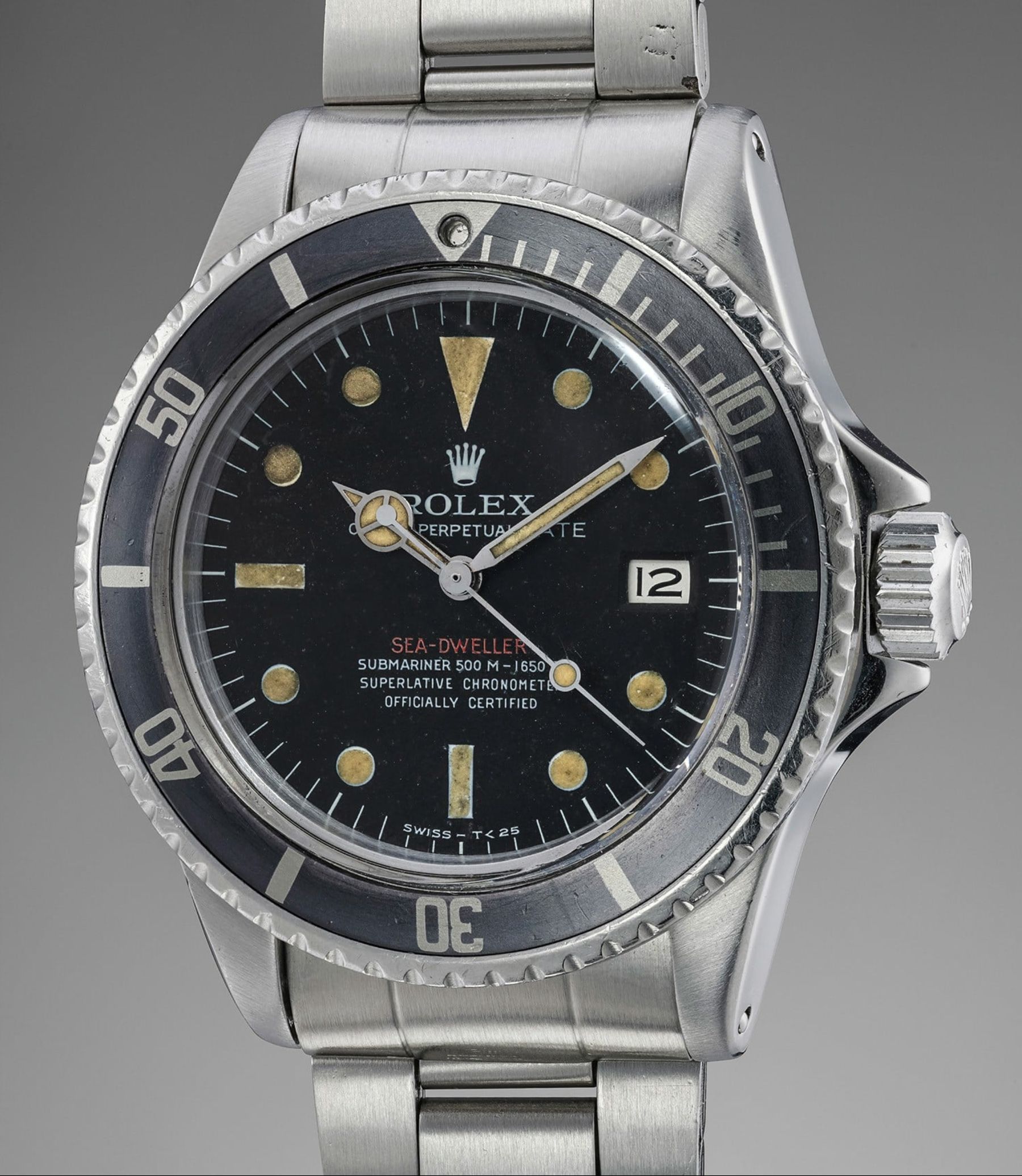
What Is the Rolex Single Red Sea-Dweller?
Before we “dive” into it, what is the Rolex Single Red Sea-Dweller? The Sea-Dweller collection debuted in 1967, offering better water resistance than the Submariner, which came to market over a decade prior. At the time, the Submariner offered resistance to depths up to 200 meters, which was certainly significant, especially for the time. However, early Sea-Dweller prototypes developed to literally “dwell” on the sea floor improved upon that depth rating with resistance to depths of up to 500 meters. Eventually, Rolex upgraded that depth rating to 610 meters with the “Double Red” Sea-Dweller and then 1,220 meters, where it remains today.
The ultra-rare “Single Red” Sea-Dweller ref. 1665 was an early prototype of the series distinguished by a red Sea-Dweller logo. Its successor, the aptly named “Double Red Sea-Dweller,” features two lines of red text on the dial, one reading “Sea-Dweller” and the other reading “Submariner 2000” directly below it. Also produced under ref. 1665 was the “Great White,” featuring no red text on the dial at all.
Other features of the Single Red include the 27-jewel caliber 1575 Perpetual movement, a matte black dial, a 40mm Oyster case outfitted with a domed acrylic crystal, a 60-minute diver’s bezel, a full stainless steel construction, and a three-link Oyster bracelet. Of course, it also features the date mechanism at 3 o’clock, denoted on the dial in larger font next to the wording “Oyster Perpetual.” It wasn’t common at the time for dive watches to include a calendar display on this dial, so it makes sense that Rolex would draw attention to this particular detail with larger font, as it was one of the first dive watches designed to spend multiple days below the surface of the ocean.
With that in mind, let’s take a closer look at what makes the Single Red Sea-Dweller so incredibly rare.
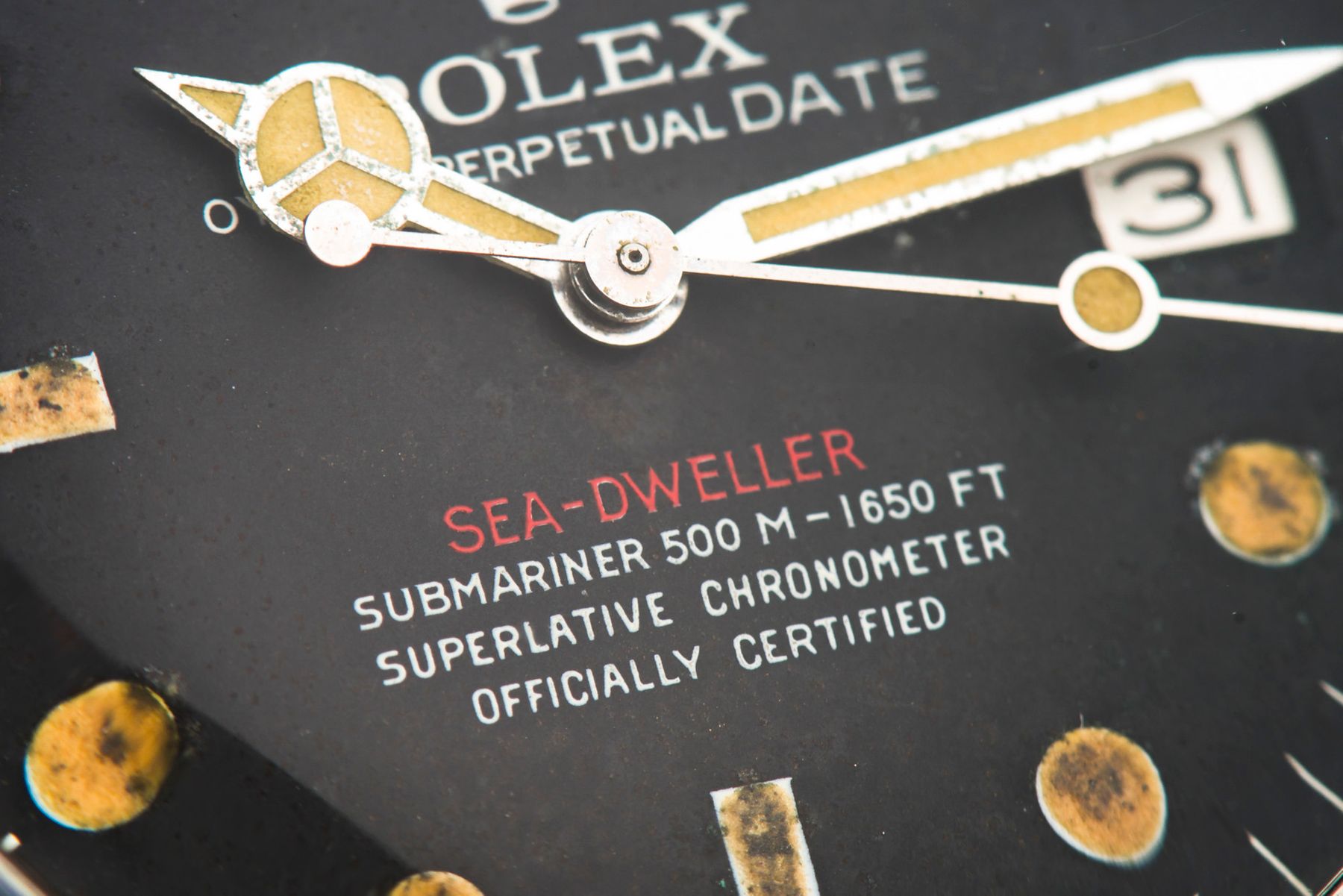
Only 12 Single Red Sea-Dweller Watches In Existence
For starters, there are only about a dozen Single Red Sea-Dweller watches known to still be in existence today. While both the Red Submariner and Double Red Sea-Dweller were simply the very first iterations of their respective references and were each produced for numerous years, the Single Red Sea-Dweller was really more of a prototype, and was never formally released to the public or sold through authorized retailers.
Instead, all twelve known examples were given to hand-selected divers for either official testing purposes or as awards. Of those twelve watches, at least one has had its dial replaced due to water damage, so at the present time of writing, there are only eleven known examples of the Rolex Single Red Sea-Dweller still in existence today.
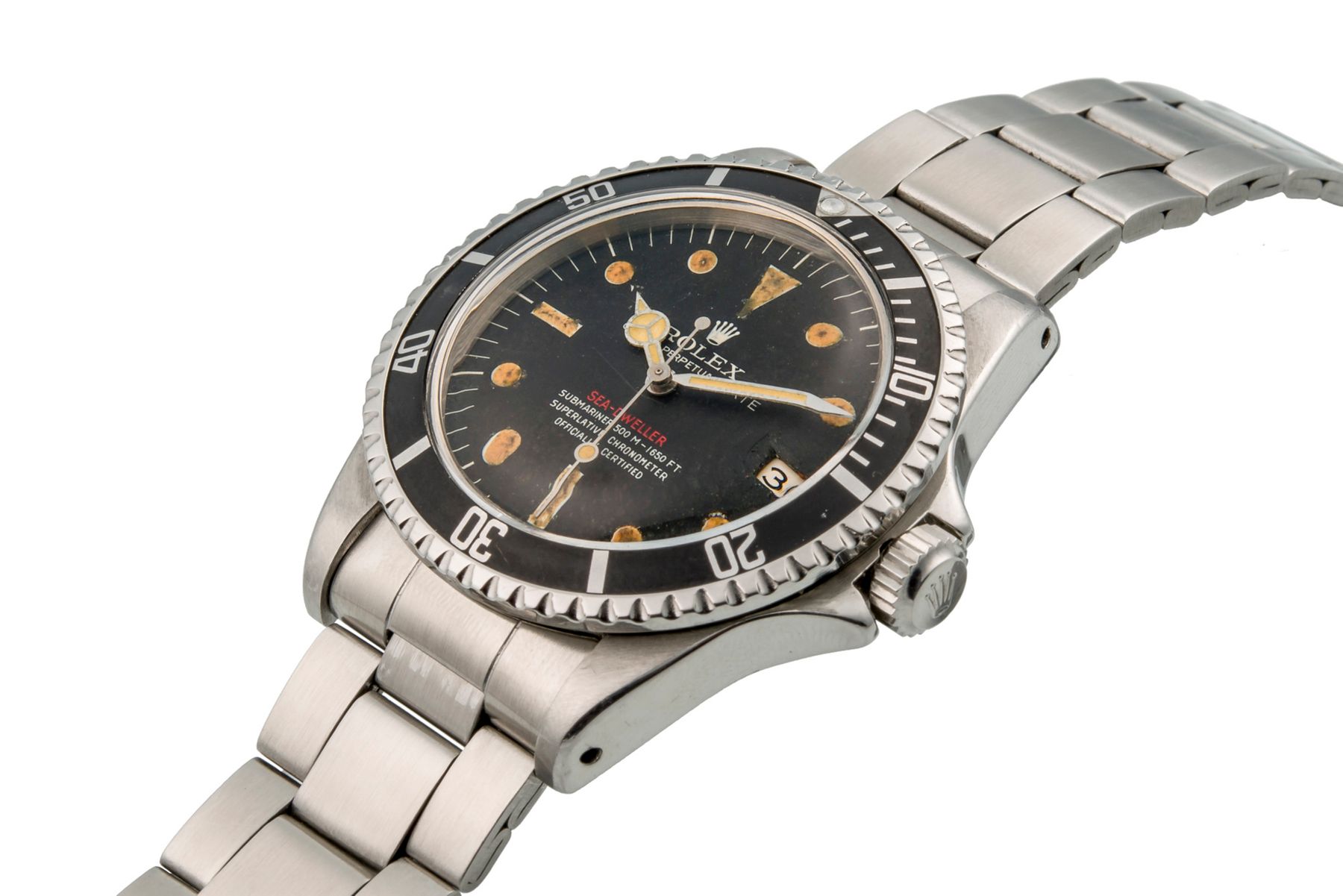
More Than Just The Color Of The Text…
One of the things that sets both the “Double Red” and “Single Red” Sea-Dwellers apart from other Sea-Dweller references, is that they both have the “Submariner” and the “Sea-Dweller” names printed on them. While it is only the “Sea-Dweller” name that appears in red text on the dial of the Single Red Sea-Dweller (hence its nickname), the dial differences are more than just a matter of the color of the text.
Instead of reading “Submariner 2000” like on the Double Red Sea-Dweller, the second line of text (printed in white letters) on the Single Red Sea-Dweller reads “Submariner 500 M – 1650 FT” because its production pre-dated the final design of the reference 1665 Sea-Dweller, which would benefit from an increased depth rating. In addition to the difference in depth rating values and the additional line of text, the order of the units for the depth rating itself changed too, making the small handful of Single Red Sea-Dwellers the only “meters first” Sea-Dweller watches ever produced by Rolex.
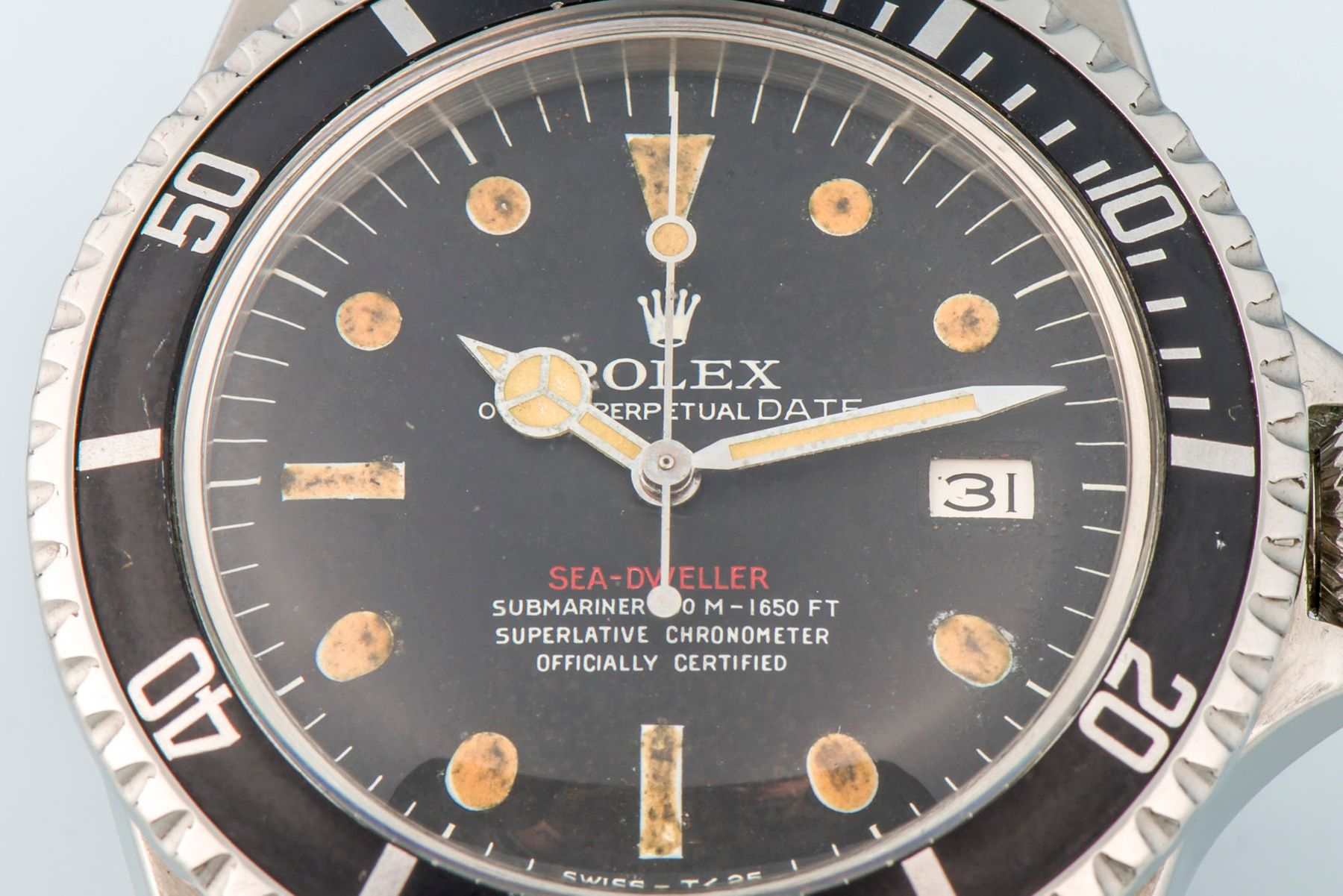
They May (Or May Not) Have Helium Gas Escape Valves…
Today, the helium gas escape valve is probably the number one thing that defines Rolex’s Sea-Dweller collection; however, the very first Rolex timepieces to be fitted with this highly-specialized technology were reference 5513 Submariners that were used as prototypes while Rolex worked with COMEX to develop the final design for their gas escape valve. Instead, the new feature to be introduced to Rolex’s dive watches with the appearance of the Single Red Sea-Dweller was an increased depth rating and the addition of a date complication, so that divers living and working below the surface of the ocean could keep track of days in addition to elapsed time while they remained underwater.
Interestingly enough, seven of the twelve Single Red Sea-Dweller watches do not have helium gas escape valves fitted to them. The issue with trapped helium molecules forcing crystals to “pop off” during decompression only occurs at greater depths, when divers are living in helium-saturated environments for extended periods of time. In more shallow waters, none of these same issues exist. For example, the divers who were part of Tektite 1 had absolutely no use for helium gas escape valves on their watches, since the gas mixture they used consisted of only nitrogen and oxygen due to the relatively shallow depth of the project (50-feet / 15 meters).
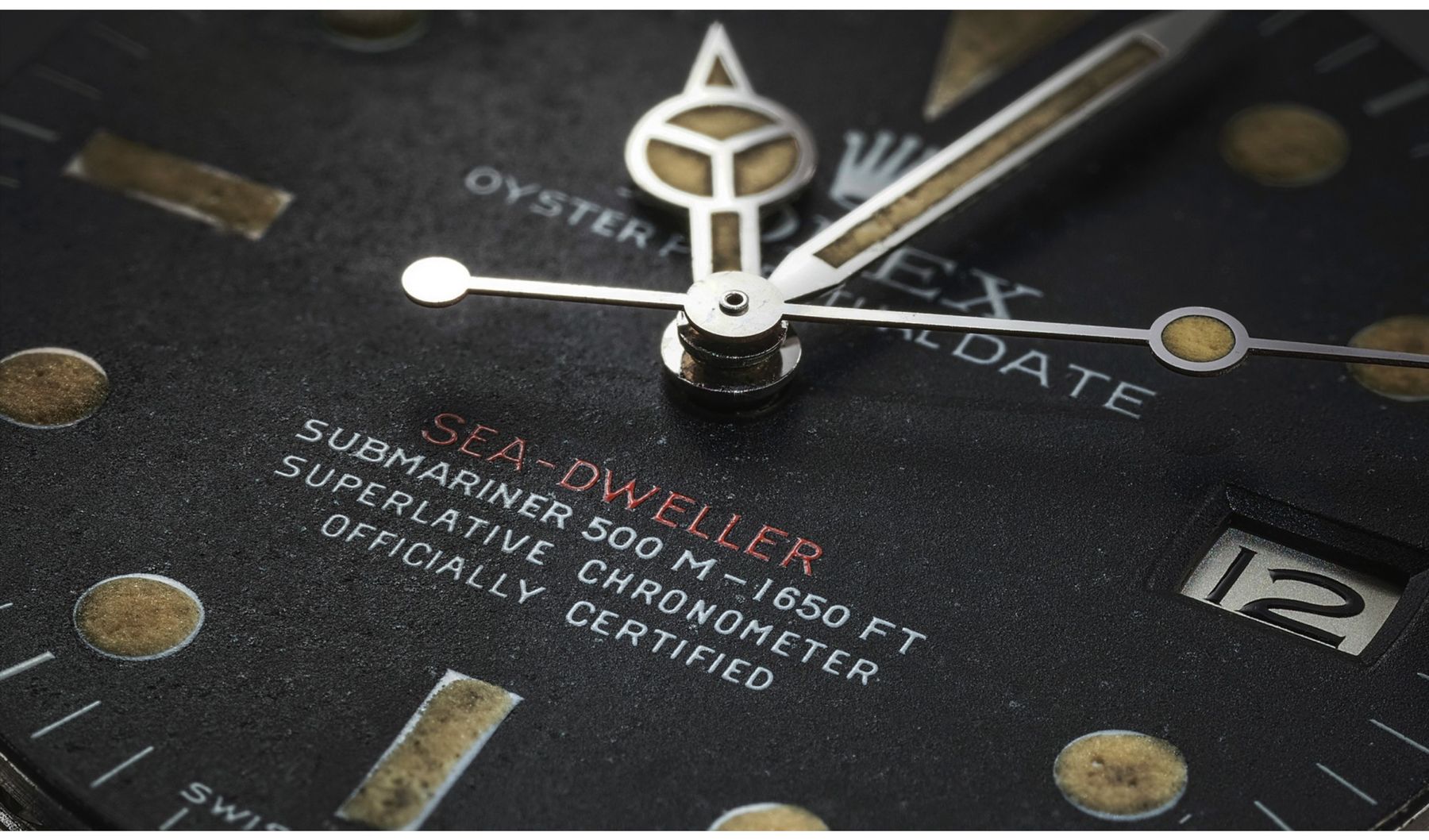
Rolex Single Red Sea-Dweller Price
Only a few Single Red Sea-Dweller examples have ever hit the secondary market. One was sold at auction at Sotheby’s in 2013 for $383,00o, another in 2012 for about $500k, and a third was sold by Phillips in 2018 for over $700k. The one from 2013 was sold by the original owner, who had a fascinating career as a diver for the Underwater Demolition Team. Interestingly, the original bezel was lost while diving at depths of over 200 meters. Considering that it was serviced in 1993, it’s also pretty remarkable that it still has its original dial. All that is known about the 2012 example is that it was purchased by a Japanese collector in the 1980s, after which it remained unworn and tucked away within a safe.
Each of these coveted 1665 Sea-Dweller watches gives us a general idea about their value, which could be much higher than those prices in today’s market. Of course, the condition of the watch and the presence of all original parts also play a significant role in the 1665 Single Red price. However, with examples selling for over $700,000 back in 2018, it is easy to see how one could easily sell for over the million-dollar mark if it were to surface at auction today.
Given their extraordinarily limited production numbers and well-documented history of rigorous professional use, Rolex Single Red Sea-Dweller watches are incredibly rare, and rarely surface at auction – let alone on the wrist of someone you are likely to encounter in everyday life. Although common knowledge says that there are only twelve known examples still in existence, Rolex never confirms details such as production numbers, so there is always a tiny sliver of hope that the thirteenth Single Red Sea-Dweller may be the next “barn find” for some incredibly lucky individual.
